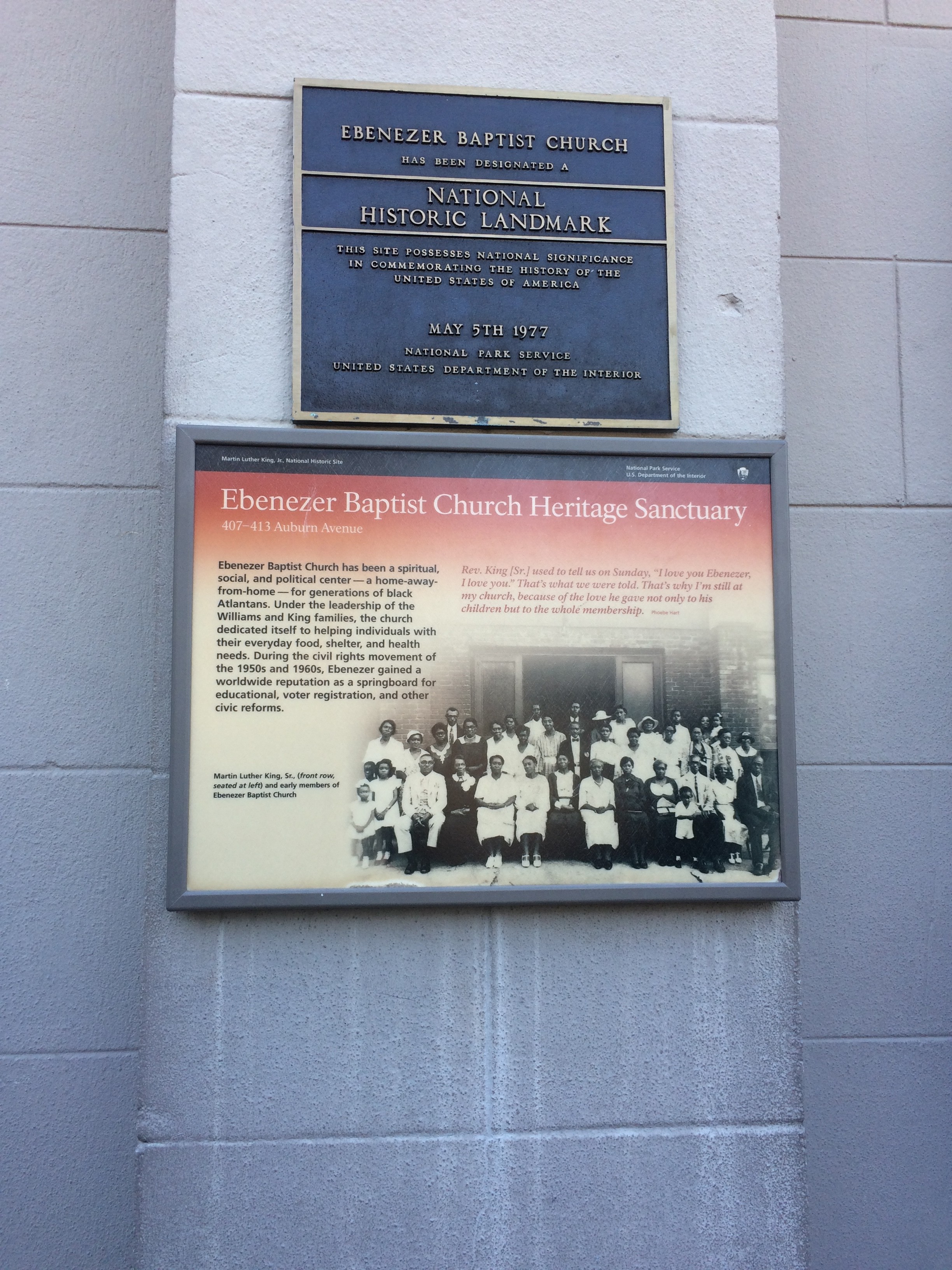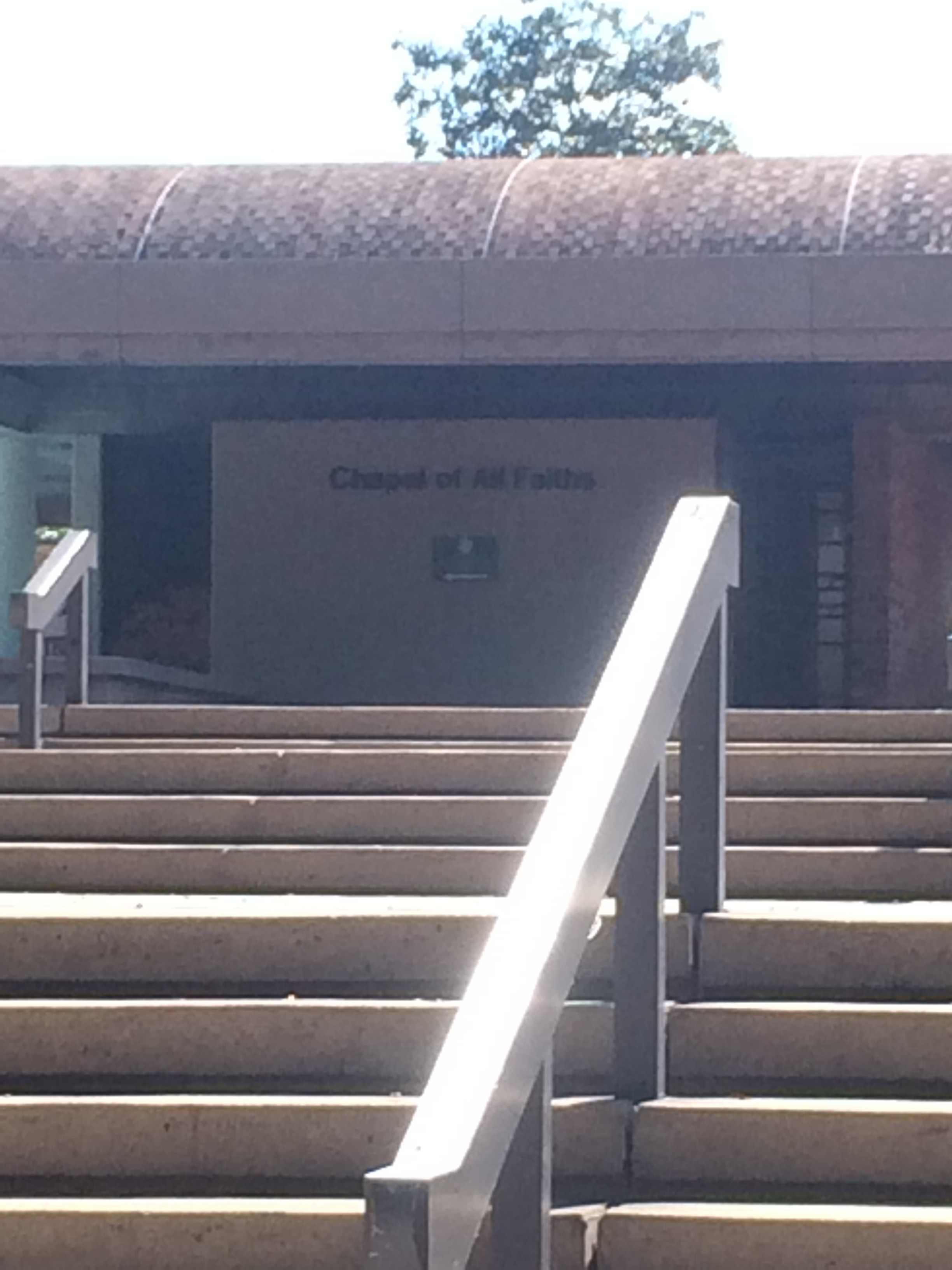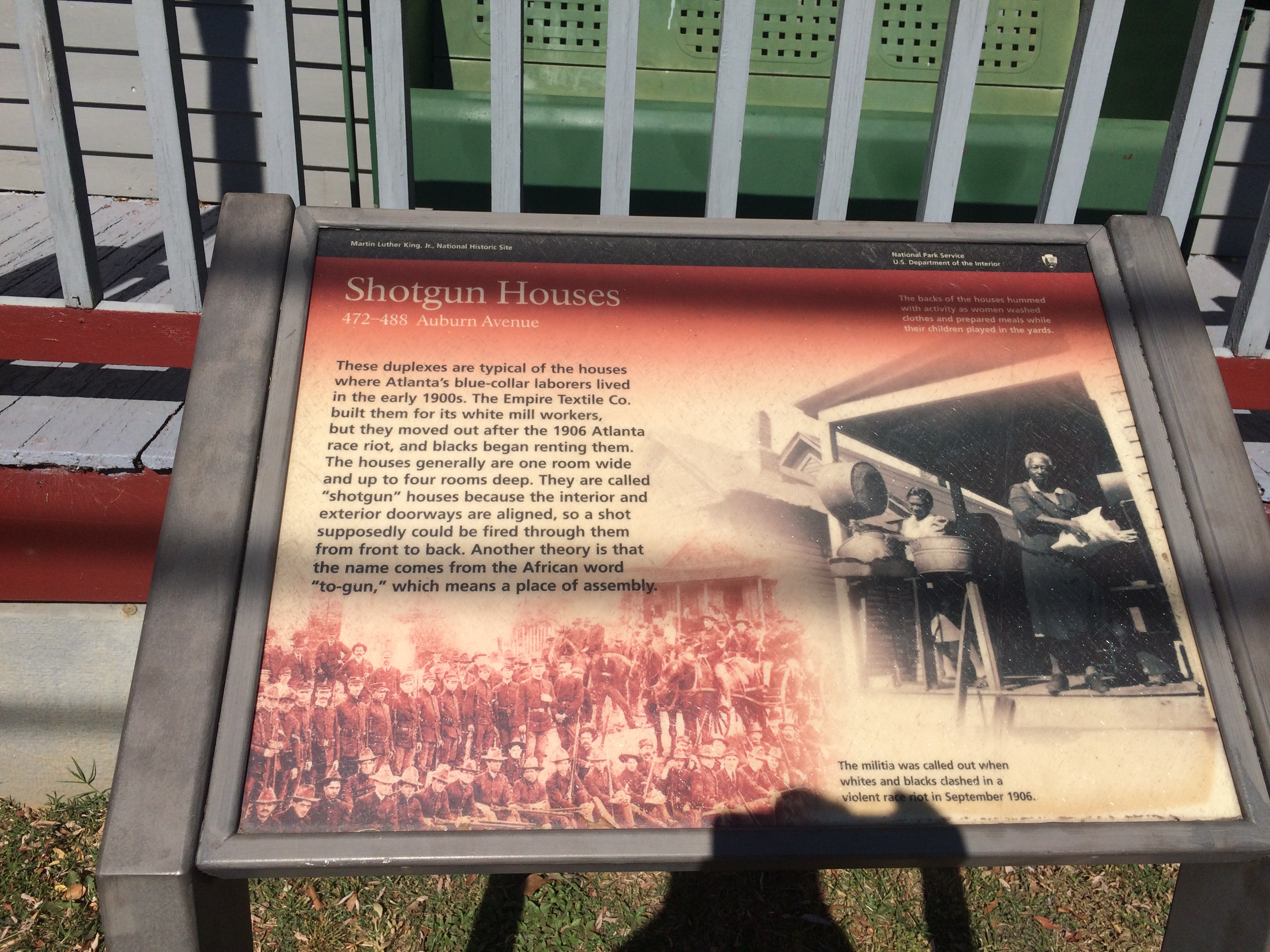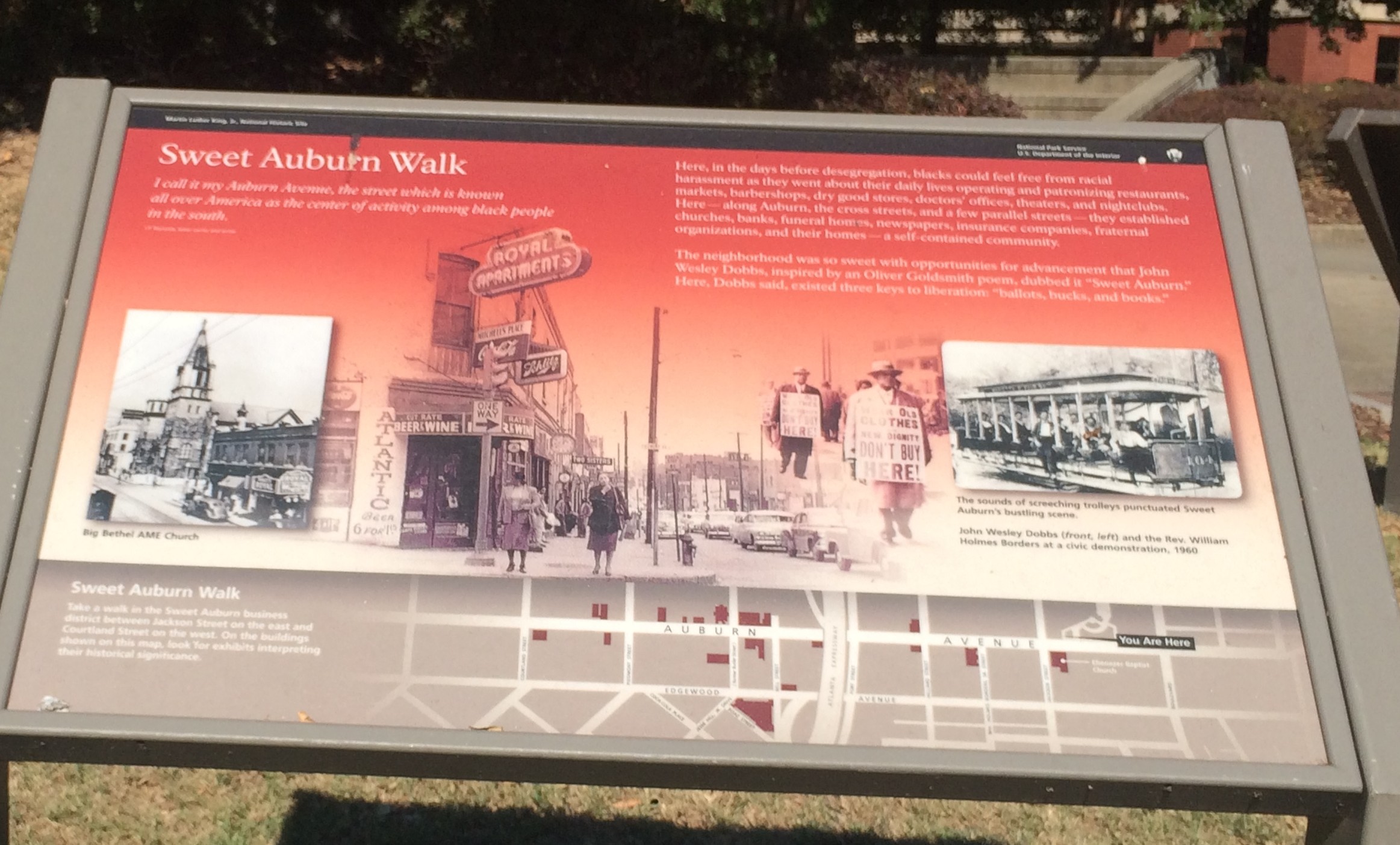Through the built environment descriptions I have completed in the past, I have really gotten to know more about Auburn Avenue’s history and culture. Each time I returned to the street, whether to a specific location, or just an entire section in general, I began to notice more and more the political implications of the way it is constructed and used by the city of Atlanta. This final trip to Auburn Avenue (at least for the purposes of this assignment) gave me yet another opportunity to see, hear, feel, and experience a political movement in and of itself.
Auburn Avenue is historically known to many as the home to Martin Luther King Jr., the Ebenezer Baptist Church, and the Southern Christian Leadership Conference. These buildings and more remain in use today, albeit some more as museums than actual businesses. There is an on-going debate about the future of this street. Should it move away from its Civil Rights Movement roots, or should it remain and maintain its heritage as a counter-public? Walking through the Martin Luther King Jr. Historic District, it is impossible not to feel like you have gone back in time, especially walking in the opposite direction of the skyscrapers that populate the downtown Atlanta area. The buildings are simple, but still ornate and distinguished. The architecture is practical. In many ways, this section of Atlanta is all but removed from the built narrative of Atlanta. Upon recognizing this alien characteristic, I realized that it was the emphasis on the old which made the street so unlike any other place in downtown Atlanta. There are political implications. Why would the city of Atlanta like to promote the history of the street rather than destroy it and move forward? There are many answers to this question depending on who is asked. Some people say it is good to keep the history as a reminder of what was so bad about the south before the Civil Rights Movement. Stemming from that answer is the response that this is a part of Atlanta that did something right. When I revisited this historic section of Auburn Avenue for the third time, this is what I focused on and really looked for in the built environment. Is Atlanta memorializing the street to remember the history so as to not repeat it? Or is the real motive to redefine the memory of the street to shed a better light on Atlanta?
Of course, the answer is subjective. So I will leave images of what I saw below and I will give my interpretations, but leave the rest to you.

Reading this sign, I couldn’t help but notice that it specifically refers to black Atlantans rather than the black population in general. I also found it interesting that it mentions the Williams family in text, but pictures King. This sign is picking and choosing the parts of the history that it tells, and it highlights the positive social advancement that the Atlantan church and its members had as it gained “a worldwide reputation.”

The naming of this structure implies unity. Unity, being a positive attribute of the civil rights movement, is highlighted and focused on, whereas the wrongdoings of the nation, state, and even the very city of Atlanta in such a tense time in history.

I could not help but notice the neutrality in the narrative of this sign. In the larger text, it talks about how the houses were for white blue collar textile workers, but black people moved in after race riots. Race riots, no big deal. What caused the riots? The answer can be found at this link, but it does not appear in the sign. What is discussed on this sign is the presence of black families on the street in quaint housing known to them perhaps as “to-gun” places of assembly.

This sign tells about the past successes of Auburn Avenue as a social hub for the civil rights movement.
All in all, this street is screaming at me through these signs. The city of Atlanta is systematically portraying this street in the best light possible, as any strategic community would in order to attract visitors and potential residents. However, the memory of the place is disturbed, and pieces are left out. From a political standpoint, this could go well, as it does bring visitors. But overall, knowing the darker pieces of the history and knowing them to be left out of the narrative of Auburn Avenue, the street signs seem underhanded and misleading.
**Photos and videos are taken by the author**